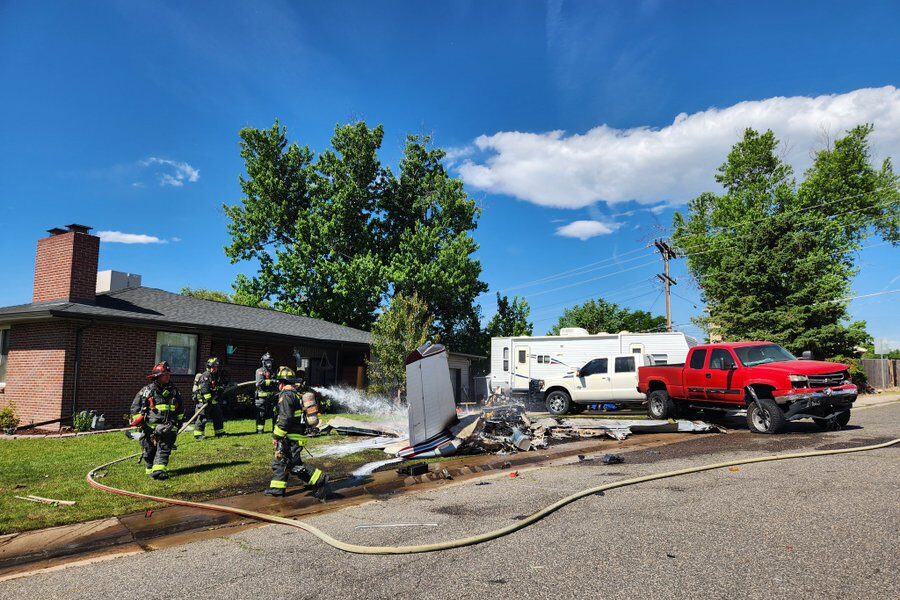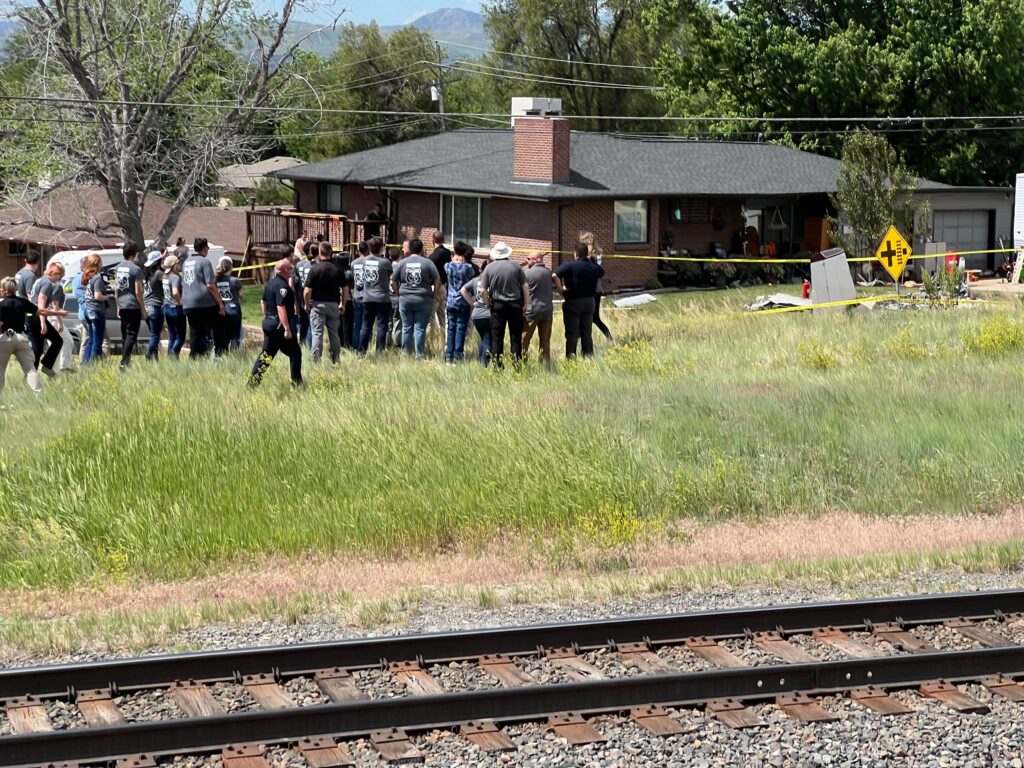
Investigators still aren’t sure what exactly caused a small plane crash in Arvada that killed one person and seriously injured three others. However, a preliminary report released by the National Transportation Safety Board this week did confirm some additional details about the June 7 crash.
According to the three-page report, which is subject to change, all four victims in the crash were onboard the Beechcraft 35 Bonanza when it attempted an emergency landing in a residential neighborhood. It was initially unclear whether any of them were bystanders on the ground at the time of impact.
The crash and a subsequent fire killed one passenger, later identified by family as Melissa Brinkmann. The pilot and two minors onboard also suffered serious injuries. Their identities have not been made public.
The plane was flying from Centennial Airport to Fort Collins when it crashed. About 10 minutes after take off, an air traffic control tower for the Rocky Mountain Metropolitan Airport received a call from the pilot, who said the aircraft was losing oil pressure. Less than two minutes later, the pilot called back to say the plane was now losing power.
“I don’t know what to do. I’m going to put it down,” the pilot told the tower. “I’m trying to find a field or a park. I’ve got something in sight. I don’t know where I am.”
Witnesses told investigators the plane was flying low and that the engine “did not sound normal.” They also reported seeing white smoke coming from the aircraft before it attempted its emergency landing.
According to the NTSB report, the airplane’s left wing hit a large tree next to the road it was trying to land on. The plane’s landing gear was not down when it hit the ground, causing it to slide about 400 feet along the road until it collided with a truck parked outside a private residence.
Extensive damage to the wreck has made it difficult for the NTSB to verify what was happening in the cockpit when the plane went down.
“The cockpit instruments were destroyed by fire and could not be evaluated. Onsite examination of the airframe showed that the landing gear and flaps were retracted. Because of the severe fire damage, the engine and airframe were transported to a secure facility for more detailed examinations,” said the NTSB’s preliminary report.

The preliminary report goes on to note that investigators have found no obvious reason for the plane’s oil pressure or power problems.
“No flight control cable separations indicating preimpact failures were found for any of the flight control systems. No preimpact anomalies or structural failures were found with the airframe. No preimpact anomalies or structural failures were found with the airframe,” the report said. “Damages on the propeller blades showed evidence consistent of some degree of rotation at the time of impact. Examination of the engine revealed that the engine was partially attached to the engine mounts and firewall. The engine case was intact with no obvious holes or preimpact damage. The oil cap was on and secure. The oil quick drain was found in the closed position and was securely mounted to the oil pan with safety wire present.”
A final report from the NTSB is still in the works. There is no timeline for its release.
The Arvada crash is one of six small plane crashes reported in Colorado this month. It was the only one where someone died.
CPR News’ Andrew Kenney contributed to this report.








